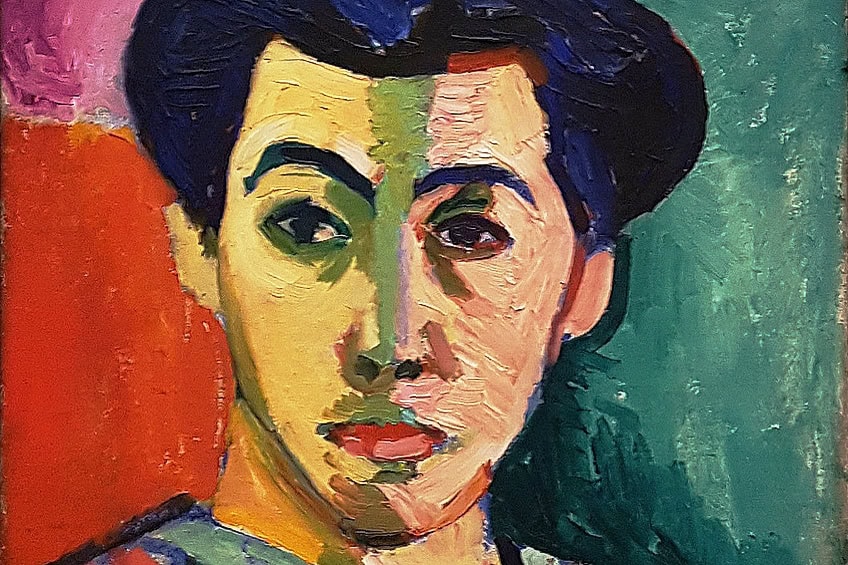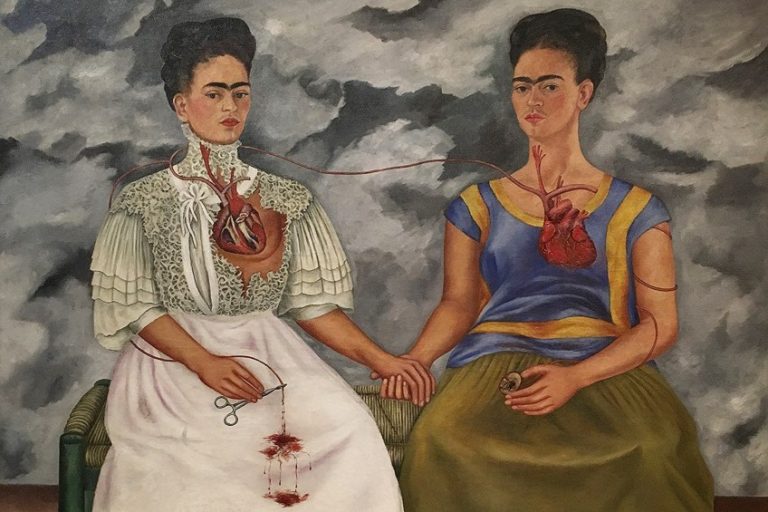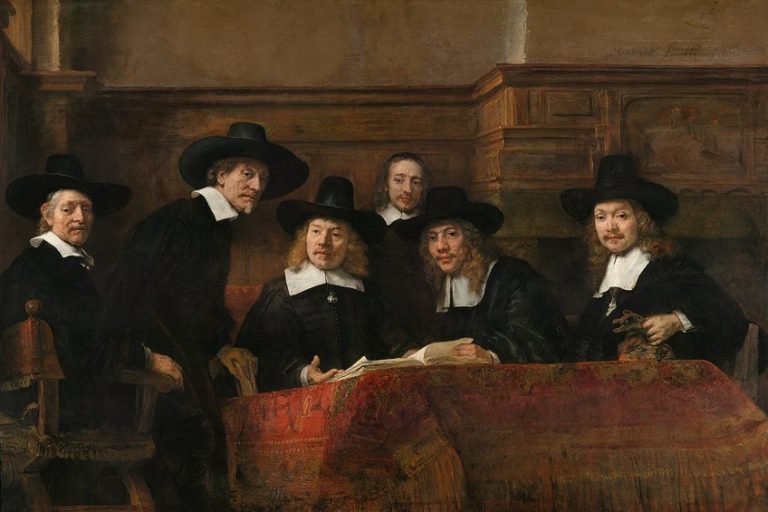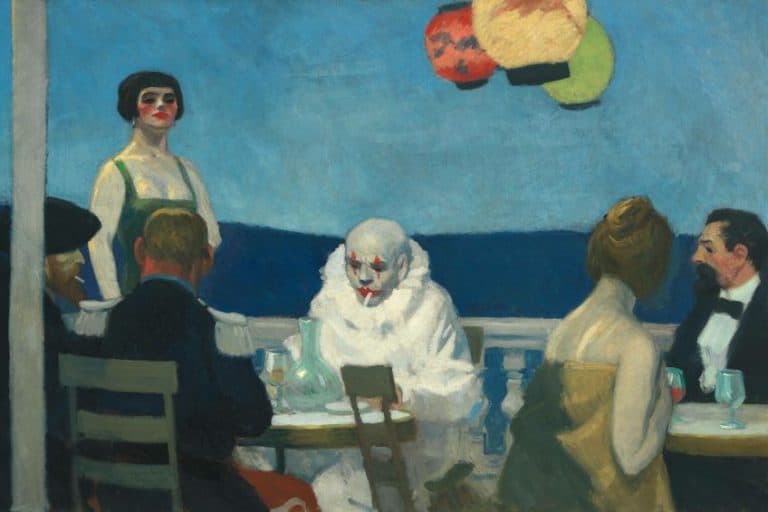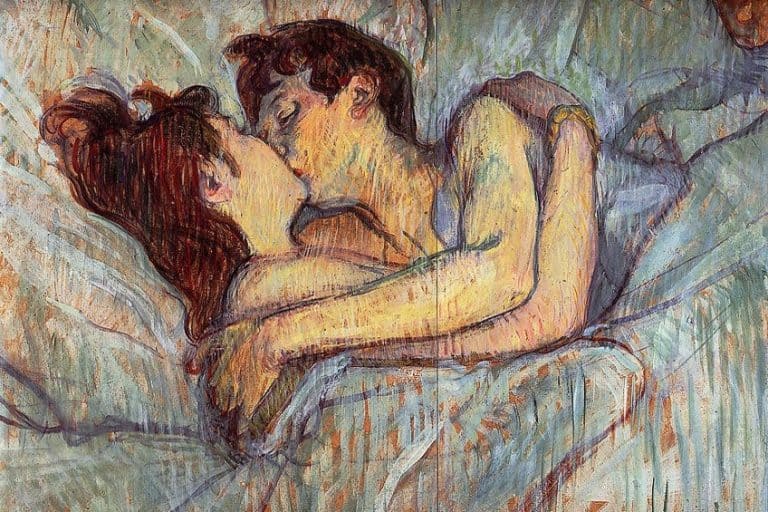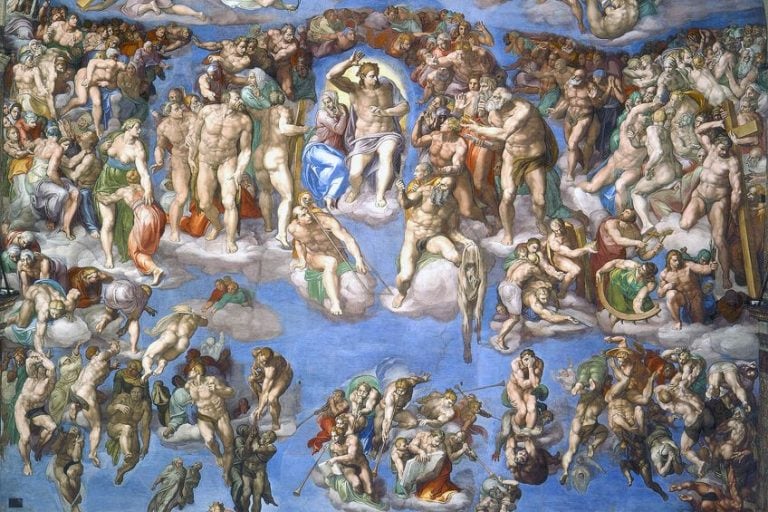“The Green Stripe” by Henri Matisse – The Power of Color
Henri Matisse’s The Green Stripe (1905) stands as a seminal work in the evolution of modern art, emblematic of the Fauvist movement’s radical departure from traditional representation. Painted during a period of intense experimentation, the portrait of Matisse’s wife, Amélie, is distinguished by its bold use of color and innovative brushwork. The central green stripe dividing her face exemplifies Matisse’s daring approach to color as an expressive force, challenging conventional aesthetics and emphasizing emotional resonance over realistic depiction. The Green Stripe not only captures the essence of Fauvism but also highlights Matisse’s role as a pioneering figure in early 20th-century art, paving the way for future avant-garde movements.
Key Takeaways
- The Green Stripe by Henri Matisse is a seminal work from 1905, embodying the Fauvist movement’s innovative use of color.
- The painting is a portrait of Matisse’s wife, exemplifying a shift towards abstract representation in early modern art.
- Matisse’s work contributes significantly to the legacy of modernism by challenging traditional art forms and techniques.
Background and Context
| Artist | Henri Matisse (1869 – 1954) |
| Date Created | 1905 |
| Medium | Oil on canvas |
| Genre | Portrait |
| Period/Movement | Fauvism |
| Dimensions (cm) | 40.5 x 32.5 |
| Series/Versions | Standalone work, often referred to as Portrait of Madame Matisse |
| Where Is It Housed? | Statens Museum for Kunst, Copenhagen, Denmark |
| What It Is Worth | Estimated at tens of millions dollars, though the exact value can vary based on market conditions and provenance. |
The Green Stripe, also known as La Raie Verte, is an iconic oil painting by the French artist Henri Matisse, created in 1905. This artwork is renowned for the distinctive green band that runs vertically down the center of Madame Matisse’s face, thoughtfully delineating shadow from light and forming a bold contrast with the warmer tones of her complexion. As one of Matisse’s most famous works, it showcases his wife, Amélie Noellie Matisse-Parayre, and exemplifies the artist’s unique approach to color and form—an approach that would cement his status as one of the leading figures of Fauvism.
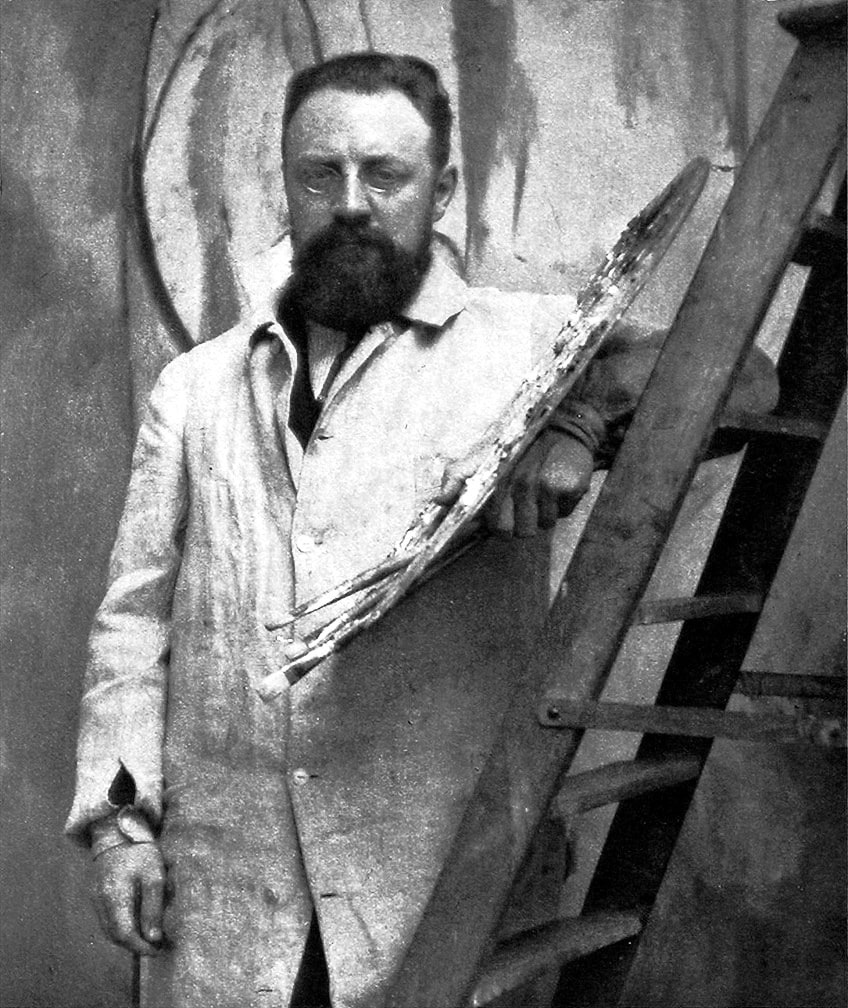
This portrait is emblematic of the Fauvist movement’s key principles, characterized by the use of intense, non-naturalistic colors and a simplicity of design. Matisse’s choice to represent his subject in such an avant-garde manner was a departure from the realistic portraiture of the time and marked a pivotal moment in the evolution of modern art.
Looking beyond its vibrant palette and striking composition, The Green Stripe is emblematic of the daring innovation that pervaded the early 20th-century art scene, reflecting a world rapidly changing and artists who no longer felt bound by the conventions of the past.
The Fauvist Movement
Fauvism was a pioneering art movement that began in France in the early 20th century. Characterized by its bold use of color and disregard for realistic representation, Henri Matisse and André Derain were central figures in the movement. Fauvist artists preferred vibrant colors to describe light and space, diverging from the naturalistic palette dominant in impressionism. The movement gained visibility following the 1905 Salon d’Automne in Paris, where the intense colors and wild brushwork elicited strong reactions.
Henri Matisse’s Artistic Journey
Matisse, born in 1869 in France, was a leader in modern art, greatly influencing the direction of art in the 20th century. Prior to his dive into Fauvism, he was influenced by the Post-Impressionist works of Vincent van Gogh. Matisse’s style developed through his exposure to various art forms, including pointillism and impressionism.
His art went through several phases, but it was Fauvism that cemented his reputation.
Inspiration and Influences
The Green Stripe was created during Matisse’s Fauvist phase and is a portrait of his wife, Amélie Noellie Matisse-Parayre. In this period, Matisse was influenced by Pointillism and the work of Vincent van Gogh, embracing color as the fundamental element in his compositions. Patrons like Michael and Sarah Stein supported his experimental approach, which allowed him to push the boundaries of traditional art. The painting later became a part of the collection at the Statens Museum for Kunst in Copenhagen.

Analysis of The Green Stripe
The Green Stripe by Henri Matisse is a groundbreaking work notable for its radical use of color and form. This analysis examines the various elements that contribute to the painting’s status in art history.
Subject and Portraiture
The painting is a portrait of Matisse’s wife, Amélie. Termed the Portrait of Madame Matisse or The Green Stripe, it showcases Amélie’s visage with a prominent green stripe running down the center of her face. This feature divides the portrait, offering a new way to interpret the depiction of the subject’s identity and mood.
Composition and Form
Matisse’s composition deviates from traditional portraiture. The canvas is split into two sections by the vertical Green Stripe, defining the structure of Amélie’s face with color rather than line. This split disrupts conventional forms of space and perspective, while placing an emphasis on geometric shapes in the composition.
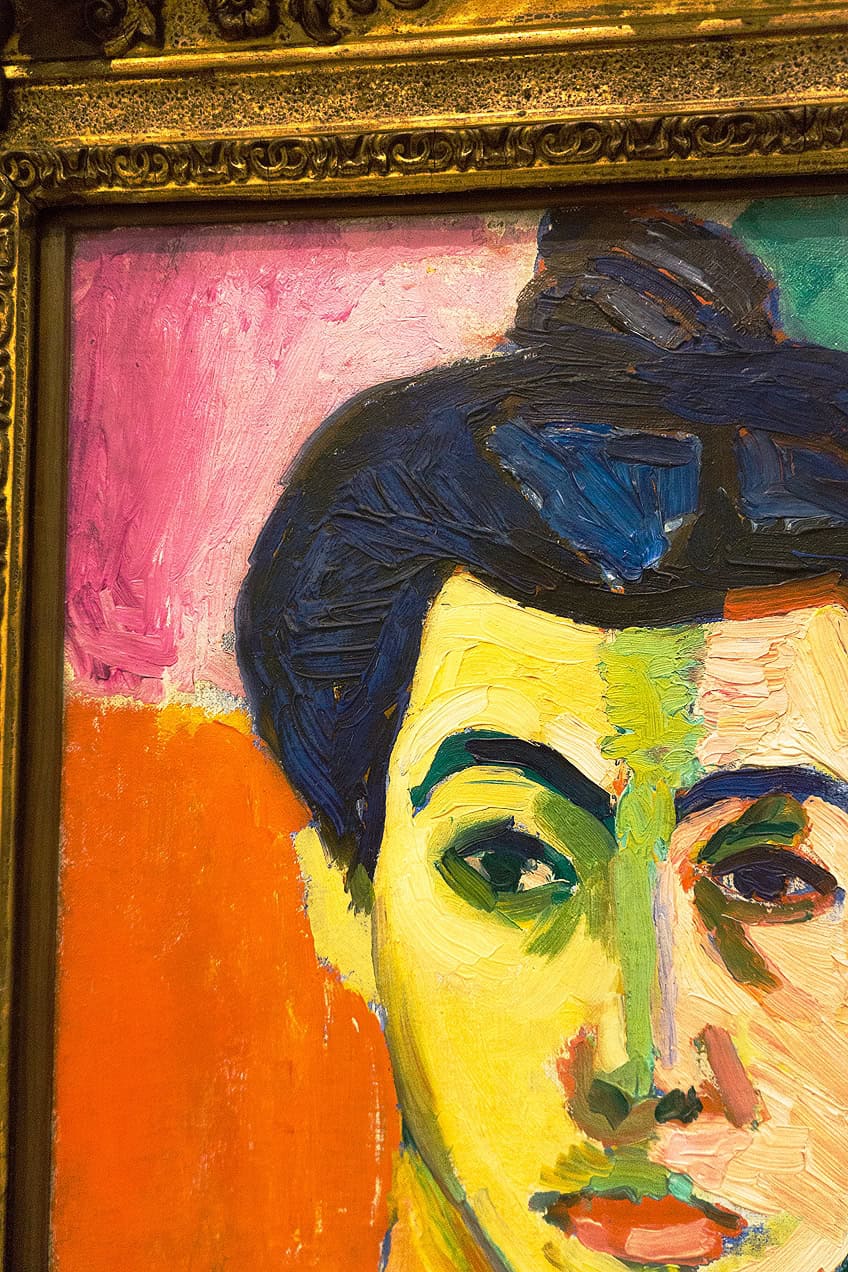
Color and Light
The color scheme defies naturalistic representation, using vibrant and contrasting hues. The titular green stripe is not only a literal element but also a demonstration of color’s emotive power. It serves functionally to construct a shadow line across Amélie’s face, challenging the traditional use of light and darkness. Through color, Matisse explores the interplay of light, offering a subjective interpretation of how light reveals form.
The stark contrast between colors mimics the effects of light and shadow without relying on graded shading.
Technique and Style
Matisse’s technique in The Green Stripe is grounded in the Fauvist style, characterized by bold brushwork and a disregard for conventional color realism. His approach favored expressive color over representational accuracy. This piece exemplifies the Fauvist emphasis on painterly qualities and the use of color to communicate emotion and structure.
Artistic Significance and Legacy
The Green Stripe marks a pivotal moment in art history, establishing new boundaries in portraiture with its avant-garde approach and profoundly influencing modern art.
Influence on Modern Art
Henri Matisse’s The Green Stripe is recognized for its significant contribution to the evolution of Modern Art. Its bold coloration and abstraction paved the way for future generations of artists to embrace non-representational techniques. The following points illustrate its influence:
- Foundational to Fauvism: Matisse’s work is a key example of Fauvism, an art movement characterized by wild brushwork and vivid colors.
- Inspiration for artists: Sarah Stein, an important patron of modern art, was notably influenced by Matisse’s innovative style.
Critical Reception and Interpretation
Upon its unveiling, The Green Stripe received a mixed critical reception. The artistic community was divided, with some praising its avant-garde elements, while others saw it as a demented caricature. Key reception points include:
- Art historian views: The piece was both criticized and celebrated for its divergence from conventional portraiture, which some art historians viewed as a significant milestone.
- Seurat’s influence: Matisse was partly inspired by Georges Seurat’s pointillism, which is evident in his own individualistic approach to color and form.
Matisse’s work remains a subject of extensive study and appreciation, as it continues to challenge and inspire artists and art enthusiasts alike.

Reflections on Matisse’s Personal Life
Henri Matisse’s artwork often offers a window into his personal experiences and relationships, particularly visible in The Green Stripe, which portrays his wife, Madame Matisse.
Madame Matisse and Their Marriage
Madame Matisse, whose full name is Amélie Noellie Matisse-Parayre, was not only the artist’s wife but also a frequent subject of his art. Their marriage, like many, was complex and seasoned with both closeness and challenges.
The couple’s partnership was foundational to Matisse’s life and work, impacting his artistic expression deeply.
Artistic Representation and Personal Challenges
Matisse’s rendering of Amélie in The Green Stripe is illustrative of both representational and personal elements. His use of bold color and abstraction reflects the Fauvist movement he was part of, as well as personal aspects of his life. The distinctive green line that bisects Madame Matisse’s face could be interpreted as symbolizing the complexities within their marriage, as well as societal expectations placed on women during that era. This artwork encapsulates the artist’s personal struggles and intimate revelations through visual forms.

Henri Matisse’s The Green Stripe remains a pivotal work that encapsulates the bold innovation and vibrant energy of the Fauvist movement. Its audacious use of color and form not only marked a turning point in Matisse’s artistic journey but also challenged and expanded the boundaries of modern art. By prioritizing emotional impact and visual harmony over realistic representation, Matisse’s portrait of Amélie serves as a testament to the transformative power of artistic vision. The Green Stripe continues to inspire and provoke, illustrating the enduring legacy of Matisse’s contributions to the avant-garde and his unwavering commitment to exploring the expressive potential of art.
Frequently Asked Questions
What Does the Green Stripe Symbolize in Matisse’s Portrait of His Wife?
The green stripe running down the center of Amélie Matisse’s face in The Green Stripe is often interpreted as a bold artistic choice embodying the essence of the Fauvist movement. Matisse’s use of color strays from realistic depiction and moves towards emotional expression, where the green stripe may represent a division of shadow and light or an insight into the sitter’s character.
What Techniques Did Matisse Employ in Creating The Green Stripe?
Matisse employed oil and tempera to create the textural and color contrasts in The Green Stripe. By using non-representational color and decisive brushstrokes, he achieved an avant-garde representation that challenged the conventional portraiture of the time.
How Does The Green Stripe Exemplify Fauvism?
The Green Stripe exemplifies Fauvism through its vivid, unnatural colors and bold, simplified design. Fauvism is characterized by a painterly quality and strong color over the representational or realistic values retailed from Impressionism. Matisse’s portrait is a hallmark of the movement, exemplifying its ethos with its emotional resonance and innovative use of chromatic composition.
How Did Critics Initially React to Matisse’s The Green Stripe?
Initially, critics reacted to Matisse’s The Green Stripe with bewilderment and disdain. The radical departure from traditional portraiture and the dramatic use of color was met with skepticism. However, over time, the painting became recognized as a revolutionary work that pushed the boundaries of modern art.
Isabella studied at the University of Cape Town in South Africa and graduated with a Bachelor of Arts majoring in English Literature & Language and Psychology. Throughout her undergraduate years, she took Art History as an additional subject and absolutely loved it. Building on from her art history knowledge that began in high school, art has always been a particular area of fascination for her. From learning about artworks previously unknown to her, or sharpening her existing understanding of specific works, the ability to continue learning within this interesting sphere excites her greatly.
Her focal points of interest in art history encompass profiling specific artists and art movements, as it is these areas where she is able to really dig deep into the rich narrative of the art world. Additionally, she particularly enjoys exploring the different artistic styles of the 20th century, as well as the important impact that female artists have had on the development of art history.
Learn more about Isabella Meyer and the Art in Context Team.
Cite this Article
Isabella, Meyer, ““The Green Stripe” by Henri Matisse – The Power of Color.” Art in Context. May 31, 2024. URL: https://artincontext.org/the-green-stripe-by-henri-matisse/
Meyer, I. (2024, 31 May). “The Green Stripe” by Henri Matisse – The Power of Color. Art in Context. https://artincontext.org/the-green-stripe-by-henri-matisse/
Meyer, Isabella. ““The Green Stripe” by Henri Matisse – The Power of Color.” Art in Context, May 31, 2024. https://artincontext.org/the-green-stripe-by-henri-matisse/.


